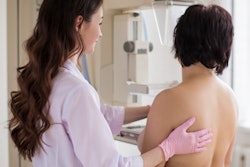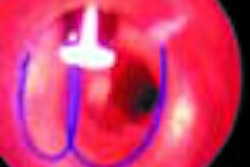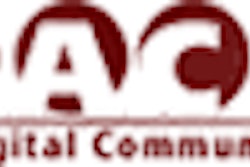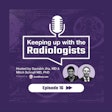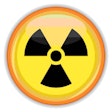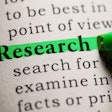Marjorie Kagawa-Singer is a nurse and anthropologist who studies the effects of culture on healthcare practices and outcomes. In her research on Asian American women and their access to preventative health programs in the U.S., Kagawa-Singer, a Ph.D. in the School of Public Health at the University of California, Los Angeles, has found that these women don’t take advantage of screening programs, particularly for breast cancer.
Even more dismaying are physician misconceptions that Asian American women aren’t at risk for breast cancer. As a consequence, general practitioners may not be encouraging them to get screened, she said. Yet research shows that breast cancer rates increase among most immigrant women once they move to the U.S., due to changes in diet and lifestyle that often contrast dramatically with traditions in their home countries.
"There’s a great need for breast cancer education and outreach among both Asian American women and medical professionals," Kagawa-Singer said. "Doctors and patients are often under the same misconceptions."
This call to action applies to all immigrant women who face obstacles to participating in breast cancer screening, such as lack of insurance, low incomes, and language barriers that complicate interactions with healthcare professionals.
In addition, cultural or religious norms -- those that have arrived with immigrant families and those that are passed on through generations -- can make women uncomfortable with male doctors or technicians performing mammography procedures.
Healthcare advocacy organizations all over the world are looking for ways to address the disconnect between foreign-born women and their doctors on the issue of breast cancer. AuntMinnie.com spoke to representatives from some of these organizations on how they have reached out, both to women at risk and to the medical community.
Cultural competency training: Who needs it?
The National Asian Women’s Health Organization (NAWHO) develops programs that educate healthcare providers in cultural sensitivity and strategies for reaching out to Asian women. The group receives funding from the Centers for Disease Control as part of a national breast and cervical cancer early detection program. The San Francisco-based NAWHO also works with outreach partners in the state departments of health in eight states.
"Because there are so many different groups among Asian Americans, we have a broad approach to cultural competency training," said Cindy Moon, program coordinator. "Our work with community-based organizations has proven helpful, and we’ve seen successful outreach efforts happen in other venues, such as churches and temples, markets, and beauty salons."
NAWHO has two training programs. Its Cultural Competency Trainers Institute is aimed at outreach partners, who then take curricula back to their communities and train people in local healthcare networks. A second program, called Communicating Across Boundaries: Cultural Competency Training on Breast and Cervical Cancer in Asian American Women, trains healthcare providers to deal with obstacles their patients may face in participating in screening programs. Since 1997, the programs have trained almost 900 healthcare professionals.
NAWHO uses role-playing and case studies to spark discussion on handling cultural differences in the healthcare setting. One case study describes a 45-year-old Asian American woman with increasing pressure in her left breast. She has never had a mammogram, nor has she performed self-examination. She asks her husband what to do, and he tells her not to worry about it.
When the breast gets too painful, and the care of her children is becoming compromised, she visits her doctor and is diagnosed with late-stage cancer. She is afraid to tell anyone about it, since she believes that her friends will gossip that she got cancer because she put her needs before those of her family.
Participants are asked to think about how the patient and her healthcare provider might feel in each part of the scenario, what cultural norms are influencing each part, what institutional, community, and provider barriers are at work, and what steps a provider can take.
"In the training, we present cultural beliefs Asian American women may have," Moon explained. "They may feel a cancer diagnosis is a death warrant, and so may not want to get screened because of what they might discover. They may not feel comfortable working with male technicians. Or they may feel that their health isn’t a priority, that their family’s well-being is more worthy of their time and energy."
ACCESS connects Arab immigrants
Based in Dearborn, MI, the Arab Community Center for Economic and Social Services (ACCESS) teaches women about preventative breast cancer practices, as well as connecting them to sources of low-cost or free mammograms in their communities. There are more than 100,000 Arabs immigrants in Michigan, some of whom are naturalized and some who are not, according to ACCESS.
Since 1998 the initiative has provided 80% of its at-risk participants with their first mammogram, referring more than 1,000 women, the majority of whom are over 50, for mammograms and clinical breast exams, according to Hiam Hamade, program coordinator.
Many lack insurance, or are unfamiliar with cancer screening programs simply because they don’t exist in their home countries. As a result, ACCESS clients don’t understand the importance of screening, and may go to a doctor only if they’re very sick, Hamade said. Cancer carries a stigma in this community as well: Some women fear that if they are screened and found to have cancer, others in the community will assume that cancer runs in the family, which will affect daughters’ marriagability, Hamade said.
ACCESS workers contact eligible women through door-to-door canvassing, visiting mosques or clinics, and advertising on radio and television. Instructional videos and brochures in Arabic teach women how to do self-exams. They are then referred to a female, Arabic-speaking family practice physician either at ACCESS’s clinic or at other clinics in the area. They even provide transportation to the clinic when needed.
"We have more than 44 different programs at ACCESS that address issues such as mental health, domestic violence, diabetes, and immigration, in addition to breast health," said Hamade, who conducts outreach herself. "We’re successful because the women trust us."
Last year, ACCESS received its fourth $92,000 two-year grant from the Avon Breast Care Fund for its outreach efforts.
Hadassah reaches out to Russian newcomers
In 1999, sociologist and anthropologist Laura Remennick of Bar-Ilan University in Ramat Gan, Israel, published a study in the journal Women & Health which found that Russian immigrant women in Israel were not getting adequate breast cancer screening.
"The predicament of being an immigrant woman combines with the set of more immediate sociocultural barriers to healthcare use to deter women from medical contacts," Remennick wrote. She concluded that the stress of adjusting to a new country and a new language, as well as anxiety about being examined by a male doctor, decreased the women’s motivation to seek breast cancer screening services (Women & Health, Vol. 28 (4), 1999, pp. 29-51).
This year, an Israeli women’s Zionist organization, Hadassah-Israel, along with the Israel Cancer Association and Hadassah’s Medical Organization, established the Women’s Health and Early Detection of Breast Cancer program. Run by a staff that speaks Russian, the program stresses that women need to take responsibility for their health. Hadassah also compiles statistics about the tendency of Russian immigrant women to present to doctors with late-stage cancer.
Participants hear testimony from a breast cancer survivor and are taught how to perform self-exams, then are offered an opportunity to meet with a physician for a clinical exam. Hadassah-Israel advertises the program through Russian-language papers, radio, and television, and through outreach by public health providers, who follow up with yearly reminders to get a mammogram.
Hadassah’s U.S. chapter also offers a breast health awareness program, Check It Out, which includes periodic online discussions about health-related issues and education about early detection practices.
The take-home message
What can healthcare professionals learn from these organizations’ experiences with immigrant women? It seems clear that offering educational materials in patients’ native languages, hiring doctors who speak the languages of their patients, creating outreach teams that include women from immigrant communities, and being sensitive to women’s cultural beliefs and practices can go a long way.
"Physician encouragement and follow-up are key factors to improving screening rates," Kagawa-Singer said.
By Kate Madden YeeAuntMinnie.com contributing writer
March 30, 2001
Click here to post your comments about this story. Please include the headline of the article in your message.
Copyright © 2001 AuntMinnie.com





